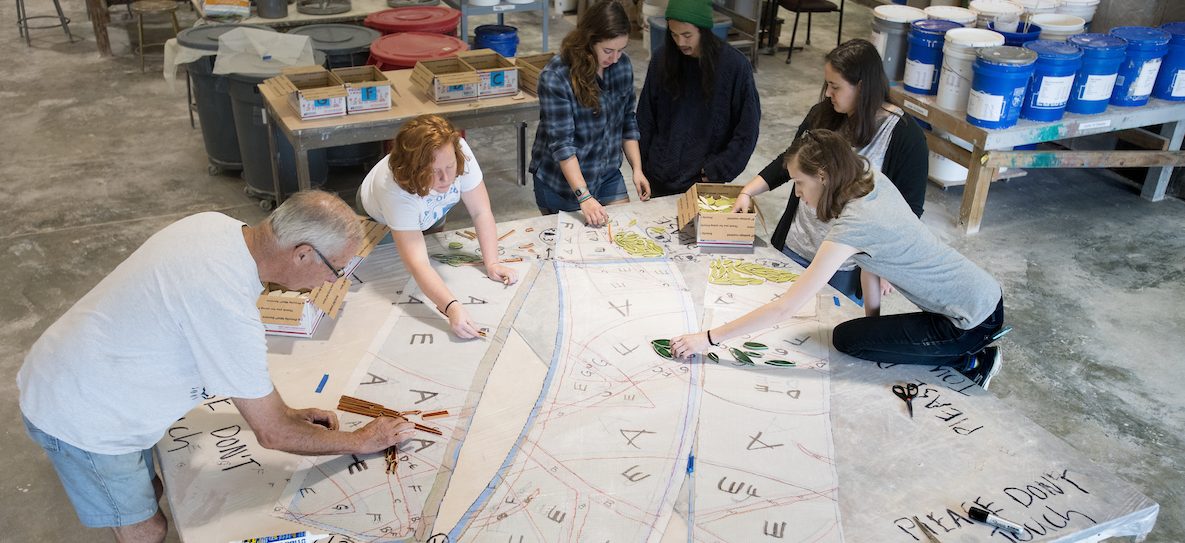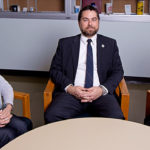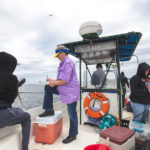UWF Art Students Design Motif for Mosaic Tile Bench
Pensacola – The nine members of the University of West Florida art department's sculptural ceramics class spent the Spring semester designing and creating a mosaic that adorns a 1,400-pound concrete bench.

Pensacola – The nine members of the University of West Florida art department’s sculptural ceramics class spent the Spring semester designing and creating a mosaic that adorns a 1,400-pound concrete bench.
The bench, which features about 3,000 tiles the students cut by hand, glazed and fired in the kiln, was recently installed outside the Hal Marcus College of Science and Engineering on the Pensacola Campus.
“It was exciting to work on a group project that contributes something lasting to the University,” said Madisen Pooton, a senior majoring in fine art.
Pooton designed the leaf and tree branch motif that the bench features. The leaves are four different shades of green, and the branches are two shades of brown. White tiles of different shapes break up the green and brown areas on the bench.
“It’s a very simple, clean design that matches the natural beauty and aesthetic of the UWF campus,” Pooton said. “We wanted the bench to look like it belongs.”
Not only is the bench useful, creating it provided a semester-long lesson in ceramic design and group work, said Dryden Wells, who as the adjunct art professor and ceramics lab supervisor, spearheaded the project.
“Working as a group to put together the bench is a different kind of artistic experience,” Wells said. “Unlike when you are doing an individual project, people can be a little bit more removed during the decision-making process, and everyone’s ideas are likely to improve.”
Wells supervised the making and firing of the thousands of handmade tiles that make up the mosaic design on the bench.
“As with all ceramic projects, this was a lot about the chemistry,” Wells said. “We made thousands of different glazes to test them to see their exact color. We also wanted to test the tiles to see which ones would crack the easiest. Obviously, we wanted to avoid using those.”
After weeks spent cutting the tiles by hand, spraying them with glaze, and firing them, the students started to assemble the mosaic.
Seeing the tiles actually laid out in preparation to having them attached to the bench is when the semester-long project started to seem real to the nine students.
“It was like working on a giant jigsaw puzzle, and seeing it come together after all the tile-making and glaze testing was amazing,” said Hannah McKerley, a senior communication major with a minor in art.
Wells said the students learned a lot about the light and transparency of different ceramic glazes as well as the process of applying the concrete adhesive that attached the tiles to the bench.
“If we had to do it again, we would have a lot of tricks up our sleeve,” Wells said. “This is definitely the kind of project where you learn as you go.”
Wells said the art department plans to continue annual projects, such as the tile bench.
“It is a priority of the art department to contribute visual, useful projects that can be used on campus,” he said.



